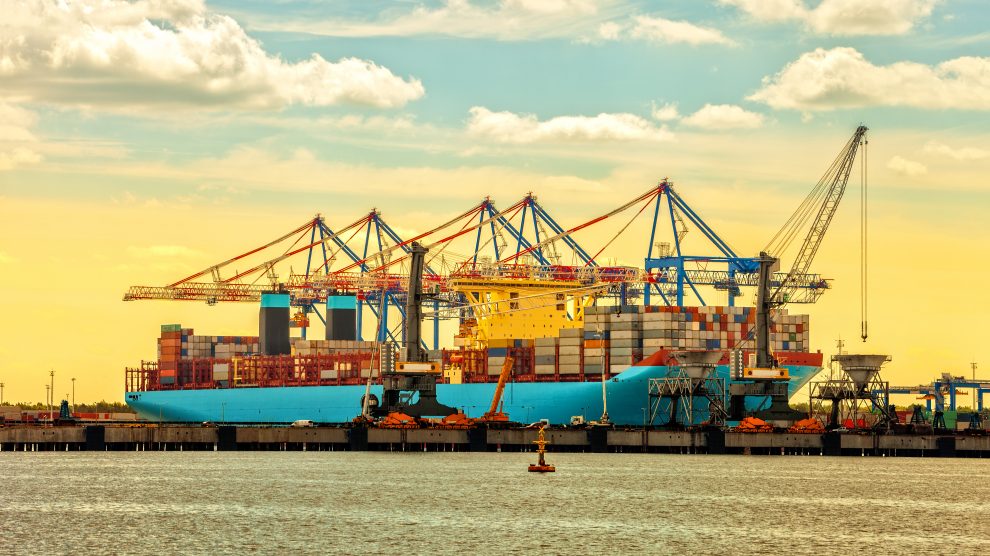Poland’s largest port, Gdańsk, which has had a good 2020 despite the slump in trade caused by Covid-19, is positioning itself to become the key logistics hub for much of Central and Eastern Europe.
The Port of Gdańsk, has signed a letter of intent with the Ukrainian Sea Ports Authority to create a new Black Sea to the Baltic trade route.
According to Port of Gdańsk CEO Łukasz Greinke, a working group has been established to promote the new route, with a focus on transporting container cargo by rail between Gdańsk and – primarily – Odesa, Ukraine’s biggest port.
Alternative route
“We have two prime objectives with the new Black Sea to the Baltic intermodal corridor,” says Mr Greinke. “First, we want to provide an alternative route to Western Europe for trade coming from major inland Chinese cities like Xian along the Silk Road through Kazakhstan over the Caspian Sea to Azerbaijan and Georgia and over the Black Sea to Ukraine.
“Second, we want to offer a new route for Ukrainian and Turkish companies wanting to transport cargo, such as roll-on/roll-off, to Central and Western Europe and on to Scandinavia via Gdańsk. We are already speaking with Turkish ship owners and freight forwarders about the benefits of the new corridor in terms of speed and efficiency. We see this new route as an exciting element of our plans to grow tonnage through the port to 50 million tonnes in 2021 rising to 60 million in five years.”
Smooth movement
The Port of Gdańsk and the Ukrainian Sea Ports Authority will act as coordinators for the new route’s logistics chain. The route will be supported by freight forwarding companies.
“We are not only talking about terminals located within the administrative boundaries of Ukrainian ports or the Port of Gdańsk, but also land terminals located in the immediate hinterland of the ports and along the route of the Black Sea-Port Gdańsk transport corridor,” added Mr Greinke.
“The route will be supported by freight forwarding companies, as well as the customs services of Ukraine and Poland. This will ensure the smooth movement of trains at the border points.”
Mr Greinke confirmed that trains from Gdańsk to Odesa and two other Ukrainian ports (Chornomorsk and Yuzhniy) would initially run once a week.
Three Seas Initiative
According to Andrzej Adamczyk, the Polish minister for infrastructure, the cooperation between the Port of Gdańsk and the Ukrainian Sea Ports Authority will become the foundation for a common intermodal corridor.
“The agreement fits perfectly with the concept of the Three Seas Initiative, and also of the Trans-Caspian Corridor,” he said.
The Port of Gdańsk is one of Europe’s fastest growing ports and this year broke into the top 20 biggest ports on the continent despite the disruption to international trade caused by the coronavirus crisis.
The port has been able to maintain tonnage levels at around 48 million tonnes for 2020 thanks to its ability to manage all cargo types.
The Port of Gdańsk contains DCT Gdańsk, the largest container terminal in Poland, and the only Baltic port capable of receiving direct calls from Asia from the biggest ships in the world.
—
Unlike many news and information platforms, Emerging Europe is free to read, and always will be. There is no paywall here. We are independent, not affiliated with nor representing any political party or business organisation. We want the very best for emerging Europe, nothing more, nothing less. Your support will help us continue to spread the word about this amazing region.
You can contribute here. Thank you.




[…] Port of Gdańsk set to become Black Sea-Baltic trade route hub […]
[…] for transit, were left out. With the help of its long-term strategic partner Poland, Ukraine is becoming increasingly involved in 3SI projects that target the development of the transport corridor between Asia and Europe […]